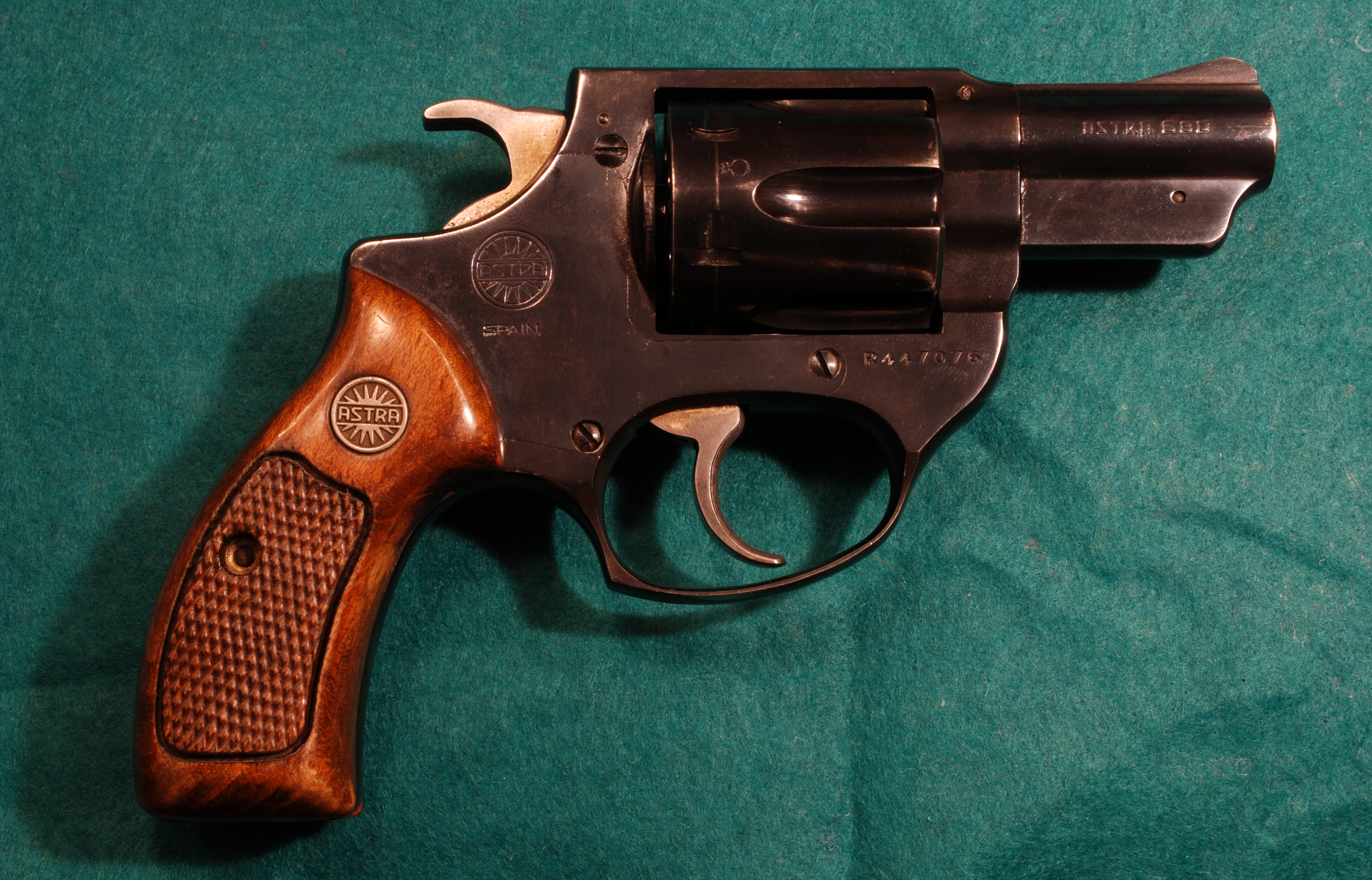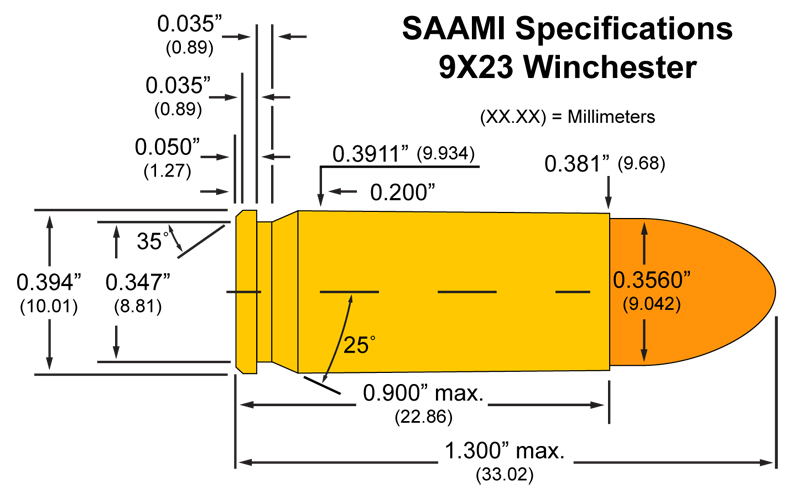|
9×23mm Largo
The 9×23mm Largo (9mm Largo, 9mm Bergmann–Bayard, 9mm Bayard Long) centerfire pistol cartridge was developed in 1903 for the Bergmann–Bayard pistol. It was adopted by the Spanish and Danish militaries, with the former using it until the 1980s, when it was replaced by the 9×19mm Parabellum. Description and history The 9mm Largo was developed by Theodor Bergmann and Hugo Schmeisser for the Bergmann–Bayard 1903 pistol. According to '' Janes'', the Spanish military loads had a muzzle velocity of and a muzzle energy of 656 J. While it's a powerful round, it was used in unlocked breech weapons such as the Astra pistol. This pistol was adopted by the Spanish army in 1905 as the "Pistola Bergmann de 9 mm. modelo 1905". Unable to find a German manufacturer to complete the Spanish order for 3,000 pistols, Bergmann turned to a Belgian manufacturer, Anciens Etablissements Pieper (who used the trademark "Bayard"), to complete the order. The final pistol, modified ... [...More Info...] [...Related Items...] OR: [Wikipedia] [Google] [Baidu] |
German Empire
The German Empire (),; ; World Book, Inc. ''The World Book dictionary, Volume 1''. World Book, Inc., 2003. p. 572. States that Deutsches Reich translates as "German Realm" and was a former official name of Germany. also referred to as Imperial Germany, the Second Reich or simply Germany, was the period of the German Reich; . from the unification of Germany in 1871 until the German revolution of 1918–1919, November Revolution in 1918, when the German Reich changed its form of government from a monarchy to a Weimar Republic, republic. The German Empire consisted of States of the German Empire, 25 states, each with its own nobility: four constituent Monarchy, kingdoms, six Grand duchy, grand duchies, five Duchy, duchies (six before 1876), seven Principality, principalities, three Free imperial city, free Hanseatic League, Hanseatic City-state, cities, and Alsace–Lorraine, one imperial territory. While Prussia was one of four kingdoms in the realm, it contained about two-thirds ... [...More Info...] [...Related Items...] OR: [Wikipedia] [Google] [Baidu] |
Destroyer Carbine
The Destroyer Carbine is a small bolt-action carbine usually chambered for the 9×23mm Largo cartridge. It was used by Spanish police and prison services, including the Guardia Civil from the mid-1930s until the late 1960s, replacing the El Tigre Rifle. It continued the tradition, started in the 1890s, of issuing police units with a short, handy, repeating carbine in pistol ammunition calibre. Design It is essentially a scaled-down Mauser Model 1893 with two rear-mounted locking lugs and a Mauser-style two-position flip safety. The Destroyer fired the same ammunition as the standard-issue police handgun but used a six-shot single stack magazine. The longer rifle barrel resulted in greater muzzle velocity, accuracy, and range. The Destroyer was initially manufactured in Eibar, Spain by Gaztanaga y Compania, then by Ayra Duria S.A. and possibly others, with some minor improvements made over time. The carbine is more accurate than a self-loading service pistol, not because of i ... [...More Info...] [...Related Items...] OR: [Wikipedia] [Google] [Baidu] |
CETME C2
The CETME C2 (also named the CB-64,) is a Spanish submachine gun based on the L2A3, British Sterling L2A3. It is an open-bolt, Blowback (firearms), blowback-operated firearm that fires the 9×23mm Largo and 9×19mm Parabellum pistol Cartridge (firearms), cartridge. Designed in the 1960s, the C2 has many notable Safety (firearms), safety features built into it and was later used to replace the Star Model Z-45 submachine gun series for Spain in the 1960s however, was later superseded by the Heckler & Koch MP5, MP5 and Star Model Z84, Star Z-84. Design The CETME C2 has many design features that make it appear as if it was a Sterling submachine gun, Sterling SMG however, none of the CETME C2's parts are interchangeable with that of a Sterling. It is open bolt and is often fitted with a 30-round or 32-round straight magazine with the magazine well not being fully perpendicular with the Receiver (firearms), receiver. The receiver itself has a crackle paint finish much like the Sterling S ... [...More Info...] [...Related Items...] OR: [Wikipedia] [Google] [Baidu] |
Racegun
A racegun or race gun is a firearm that has been modified for accuracy, speed, and reliability. Often a semi-automatic pistol, raceguns are used primarily in practical shooting competitions and are modified to function best within a certain set of rules, such as weight, size, and capacity requirements. Use Raceguns are typically purpose-built for speed, and may be based on common guns. Competitions they may be used in include The Bianchi Cup and the Steel Challenge, and various events organized by the International Defensive Pistol Association (IDPA), International Practical Shooting Confederation (IPSC), or United States Practical Shooting Association (USPSA). Features Typical racegun modifications to semi-automatic firearms include a match-grade barrel fitted with a recoil compensator, electronic optical sight, match-grade hammer and sear, a tuned trigger, and cutouts to reduce mass ("skeletonizing"). Depending upon competition requirements, some raceguns are modified wit ... [...More Info...] [...Related Items...] OR: [Wikipedia] [Google] [Baidu] |
International Practical Shooting Confederation
The International Practical Shooting Confederation (IPSC) is the world's largest shooting sport association, and the largest and oldest within practical shooting. Founded in 1976, the IPSC nowadays affiliates over 100 regions from Africa, Americas, Asia, Europe, the Middle East, and Oceania. Competitions are held with pistols, revolvers, rifles, and shotguns, and the competitors are divided into different divisions based on firearm and equipment features. While everyone in a division competes in the Overall category, there are also separate awards for the categories Lady (female competitors), Super Junior (under 16 years), Junior (under 18 years), Senior (over 50 years), and Super Senior (over 60 years). IPSC's activities include international regulation of the sport by approving firearms and equipment for various divisions, administering competition rules, and educating range officials (referees) through the International Range Officers Association who are responsible for conduct ... [...More Info...] [...Related Items...] OR: [Wikipedia] [Google] [Baidu] |
Astra A-80
The Astra A-80 is a double-action, semi-automatic pistol at one time produced in Spain by Astra-Unceta y Cia SA. The design is similar to the SIG Sauer P220 The SIG Sauer P220 is a semi-automatic pistol designed in 1975 by the SIG Arms AG division of Schweizerische Industrie Gesellschaft (now SIG Holding AG), and produced by J. P. Sauer & Sohn, in Eckernförde. It is currently manufactured by both ... and features a decocking lever. The A-80 provided the first SIG-styled .45 ACP with a nine round, double-stacked magazine. Thirty years later, SIG introduced their own version, the P227, in 2013. Notes 7.65×21mm Parabellum semi-automatic pistols .38 Super semi-automatic pistols .45 ACP semi-automatic pistols 9mm Largo semi-automatic pistols 9mm Parabellum semi-automatic pistols Semi-automatic pistols of Spain {{pistol-stub ... [...More Info...] [...Related Items...] OR: [Wikipedia] [Google] [Baidu] |
Astra-Unceta Y Cia SA
Astra Unceta y Cía was a Spanish weapons manufacturer founded on 17 July 1908, under the name Esperanza y Unceta by Juan Esperanza and Pedro Unceta. Initially based in Eibar, the centre of the Basque Country (greater region), Basque arms industry, the company moved in 1913 to Guernica (town), Guernica. History (1860–1951) and (1854–1934), both from Eibar, founded the company in 1908 under the name ''P.Unceta y J.Esperanza'' for the “sale of machinery and accessories of all types”. At this stage there was no mention of the sale or manufacture of arms, although both partners had previously been engaged in this field on their own account. In 1908 Juan Esperanza had six full-time staff, and in 1910, ten staff. In 1911 he formed a partnership with Isidro Gaztañaga - Gaztañaga y Esperanza. This new company had between 20 and 30 staff. From 1911 onward patents for firearms began to be issued to P.Unceta y J.Esperanza, concerning improvements to Semi-automatic pistol, sel ... [...More Info...] [...Related Items...] OR: [Wikipedia] [Google] [Baidu] |
9×23mm Winchester
The 9×23mm Winchester is a pistol cartridge developed as a joint venture by Winchester Ammunition and Colt's Manufacturing Company. The 9×23mm Winchester has a convoluted development history, but was commercially introduced by Winchester in 1996. Marketed primarily to competition shooters as a replacement for .38 Super for International Practical Shooting Confederation, United States Practical Shooting Association and International Defensive Pistol Association competition, the cartridge failed to find significant market success despite a high-profile introduction. The critical design feature of the 9×23mm Winchester is a much-strengthened case that does away with the Rim (firearms)#Semi-rimmed, semi-rimmed case design of the .38 Super which sometimes caused feeding problems. In contrast to the maximum pressure of 36,500 psi for the .38 Super, the 9×23mm Winchester can operate under a higher internal pressure, 55,000 psi (measured with a piezoelectric transducer).38 Super (as ... [...More Info...] [...Related Items...] OR: [Wikipedia] [Google] [Baidu] |
9×23mm Steyr
The 9×23mm Steyr, also known as 9mm Steyr, is a centerfire pistol cartridge originally developed for the Steyr M1912 pistol. History Adopted in 1912, the 9mm Steyr was the service ammunition for most branches of the military in Austria-Hungary during World War I and remained the service ammunition for Austria, Romania and Chile between the World Wars.*Wilson, R. K. ''Textbook of Automatic Pistols'', p.235. Plantersville, S.C.: Small Arms Technical Publishing Company, 1943. Some MP 34 submachine guns were also issued in this caliber in addition to 9×25mm Mauser. When the Austrian Army was incorporated in the Wehrmacht in 1938 following the Anschluss, many Steyr M1912 pistols and MP 34 submachine guns were rebarrelled to 9×19mm Parabellum for standardization purposes. Design The cartridge headspaces on the mouth of the case. Its performance is close to that of the .38 ACP. Unrelated to the modern 9×23mm Winchester, it is similar to the 9×23mm Largo cartridge in per ... [...More Info...] [...Related Items...] OR: [Wikipedia] [Google] [Baidu] |
Berdan Primer
Two rounds of .357 Magnum, a centerfire cartridge; notice the circular primer in the center A center-fire (or centerfire) is a type of metallic cartridge used in firearms, where the primer is located at the center of the base of its casing (i.e. "case head"). Unlike rimfire cartridges, the centerfire primer is typically a separate component seated into a recessed cavity (known as the ''primer pocket'') in the case head and is replaceable by reloading the cartridge. Centerfire cartridges have supplanted the rimfire cartridge, with the exception of a few small calibers. The majority of today's handguns, rifles, and shotguns use centerfire ammunition, with the exception of some .17 caliber, .20 caliber, and .22 caliber rimfire handgun and rifle cartridges, a few small-bore/gauge shotgun shells (intended mainly for use in pest control), and a handful of antiquated rimfire and pinfire cartridges for various firearm actions. History An early form of centerfire ammunition, with ... [...More Info...] [...Related Items...] OR: [Wikipedia] [Google] [Baidu] |
Headspace (firearms)
In firearms, headspace is the distance measured from a closed chamber's breech face to the chamber feature that limits the insertion depth of a cartridge placed in it. Used as a verb by firearms designers, ''headspacing'' refers to the act of stopping deeper cartridge insertion. The exact part of the cartridge that seats against the limiting chamber feature differs among cartridge and gun designs. Davis, William C., Jr. ''Handloading'' (1981) National Rifle Association pp.67-69 In general, bottleneck rifle cartridges headspace on their case shoulders; rimmed cartridges headspace on the forward surfaces of their case rims; and rimless pistol cartridges headspace on their case mouths. The case belts on belted cartridges were originally added to allow headspacing on the belt's forward surface, But in practice, this is often vestigial, and rifles chambered for belted cartridges may well headspace them on their shoulders and still be within CIP or SAAMI dimensional limits. Howev ... [...More Info...] [...Related Items...] OR: [Wikipedia] [Google] [Baidu] |







